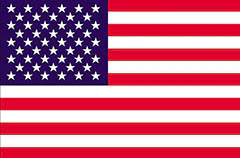Super Therm
Solar Radiant Barrier
NOTE: Laboratory and Field project results as stated here may vary according to different climate conditions.

Super Therm Advantages:
The only ceramic coating developed in cooperation with NASA.- Easy to apply – Roller or Airless Sprayer
- Most effective, durable, and long lasting thin film ceramic coating
- Blocks all three sources of solar radiation (UV, Visible, & IR)
- Reduces heat load, thus expansion and contraction
- Non Flammable, Class A – will not contribute to flame spread
- Non-Toxic, Gold MBDC Rated Cradle to Cradle Sustainability
- Reduce heat stress for occupants, animals, agriculture etc.
- Prevents mold & mildew
- Doubles as acoustic insulation, sound and heat waves are similar
Case Studies
Tuscon Int't. Airport, Arizona, USA
Saved 22% on overall energy, bill 44% on air conditioning (Aug. 2009)
U.S. Air Force - Aircraft
Protect Sensitive Electronics in Desert Climates (June 28, 2020)
LNG Spheroid Tank - Saudi Aramco, KSA
Reduce boil off/flaring of light hydrocarbons prone to evaporation

Energy Conservation Assistance Program - TX
Surface Temp: 152°F vs 105°F
Energy Conservation Assistance Program - CO
Energy loads were reduced by 26-30%
Energy Conservation Assistance Program - FL
Return on investment: 26 months
Reflectivity & Emissivity Explained

80% of radiation heat is from 0.4 to 1.2 micrometers, Super Therm blocks 95% of these radiation heat waves based on both laboratory and field data

Chengdu International Airport - China
Reduce Solar Heat Load
SamGam Chicken Farm - Korea
The cooler temperature inside the chicken house will be able to prevent mass death of chickens (June 13-14, 2005)
Before
After






Super Therm Advantages:
- The only ceramic coating developed in cooperation with NASA.
- Easy to apply – Roller or Airless Sprayer
- Most effective, durable, and long lasting thin film ceramic coating
- Blocks all three sources of solar radiation (UV, Visible, & IR)
- Reduces heat load, thus expansion and contraction
- Non Flammable, Class A – will not contribute to flame spread
- Non-Toxic, Gold MBDC Rated Cradle to Cradle Sustainability
- Reduce heat stress for occupants, animals, agriculture etc.
- Prevents mold & mildew
- Doubles as acoustic insulation, sound and heat waves are similar
Case Studies
Tuscon Int't. Airport, Arizona, USA
Saved 22% on overall energy, bill 44% on air conditioning (Aug. 2009)
U.S. Air Force - Aircraft
Protect Sensitive Electronics in Desert Climates (June 28, 2020)
LNG Spheroid Tank - Saudi Aramco, KSA
Reduce boil off/flaring of light hydrocarbons prone to evaporation

Energy Conservation Assistance Program - TX
Surface Temp: 152°F vs 105°F
Energy Conservation Assistance Program - CO
Energy loads were reduced by 26-30%
Energy Conservation Assistance Program - FL
Return on investment: 26 months
Reflectivity & Emissivity Explained

80% of radiation heat is from 0.4 to 1.2 micrometers, Super Therm blocks 95% of these radiation heat waves based on both laboratory and field data

Chengdu International Airport - China
Reduce Solar Heat Load
SamGam Chicken Farm - Korea
The cooler temperature inside the chicken house will be able to prevent mass death of chickens (June 13-14, 2005)
Before
After

Certifications

Made in USA
Technical Data
Description
Designed for performance and durability, SUPER THERM contains 4 unique ceramics to reflect of SOLAR HEAT entering a structure due to VISUAL LIGHT, ULTRA VIOLET (UV), and INFRARED (IR).
Application Data
SUPER THERM can be applied to metal, concrete, masonry and wood. The application can be spray, brush or roller. Applied at 425 micron (17 mils) WFT, 250 micron (10 mils) DFT.
Physical Data
- Solids: By Weight 66% / By Volume 63% (+/- 6%)
- Vehicle Type: Urethane/Acrylic blend
- VOC Level: 21 grams/liter
- Viscosity: 105-110 KU
- Max. Surface Temp. when applying: 149°F (65°C)
- Min. Surface Temp. when applying: 41°F (5°C)
- Max. Surface Temp. after curing: 300°F (149°C)
Purchase Super Therm
Or Request Information

Super Therm Spread Rate Calculator
TOSHIBA Logistics Corp - Japan
Room Temperature Data after 16 years
Application Date: August, 1996
Area: 177,604 ft2. (Metal Roof)
Measurement Date: 24 July, 2012 (13:00 Ambient temp: 96.08°F)
Super Therm still maintains the same room
temperature and effect after 16 years.
Only top coat has been applied after 12 years, and room temperature has dropped in addition. Coating surface temperature was measured 98.6°F~100.4°F.

KOKUYO CO., LTD. - Japan
10 years after the coating it still maintains the same insulation effect as right after applying the coating.
Super Therm applied to Batten Seam Roofing
Application Year: 1994
Application Area: 64,583 ft2
Measurement Points: 5.9 feet from the floor of the second-floor

When Super Therm was applied in 1994, the room temperature had decreased by 9°F, and it was kept below the outside temperature. The coating maintained the same insulation effect in 2004, even 10 years after it was applied.






































































































